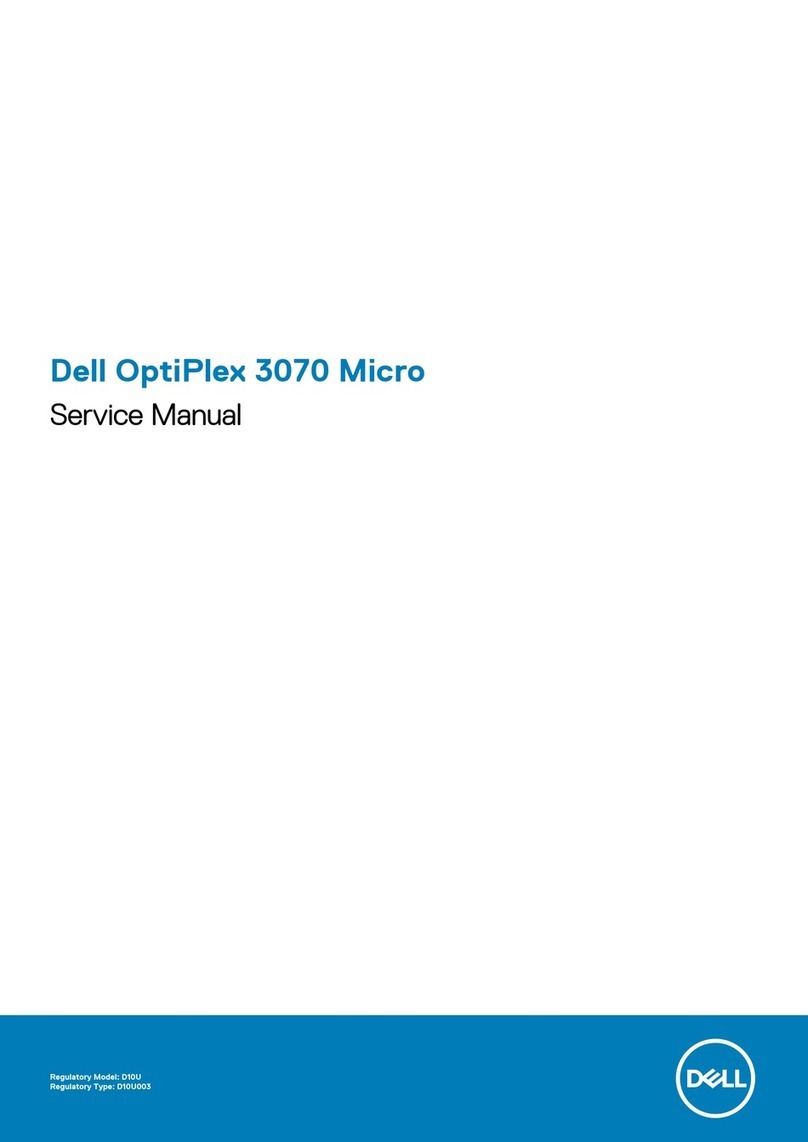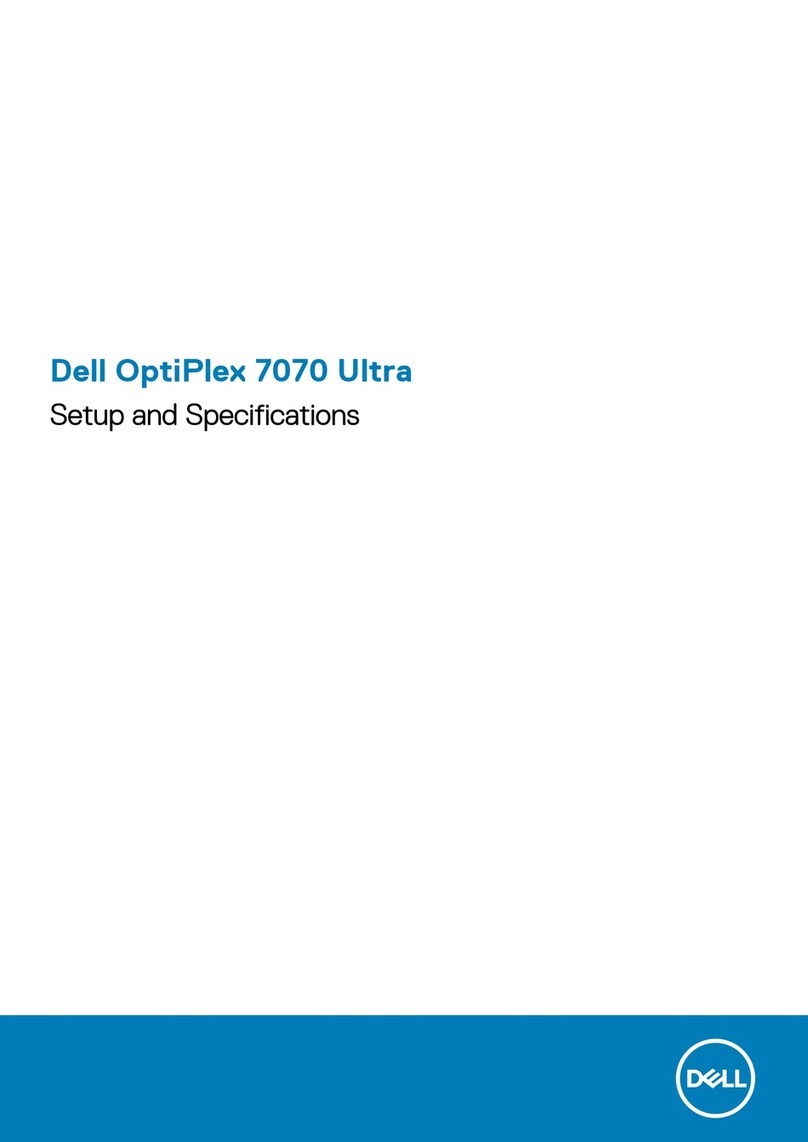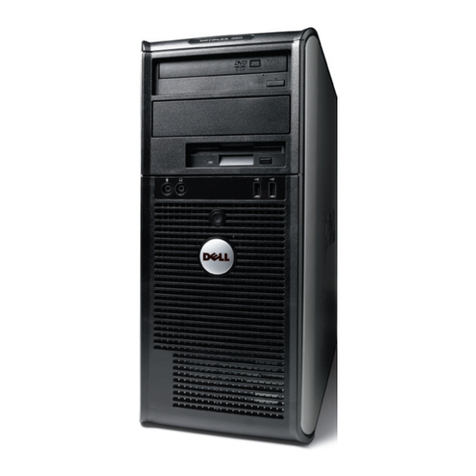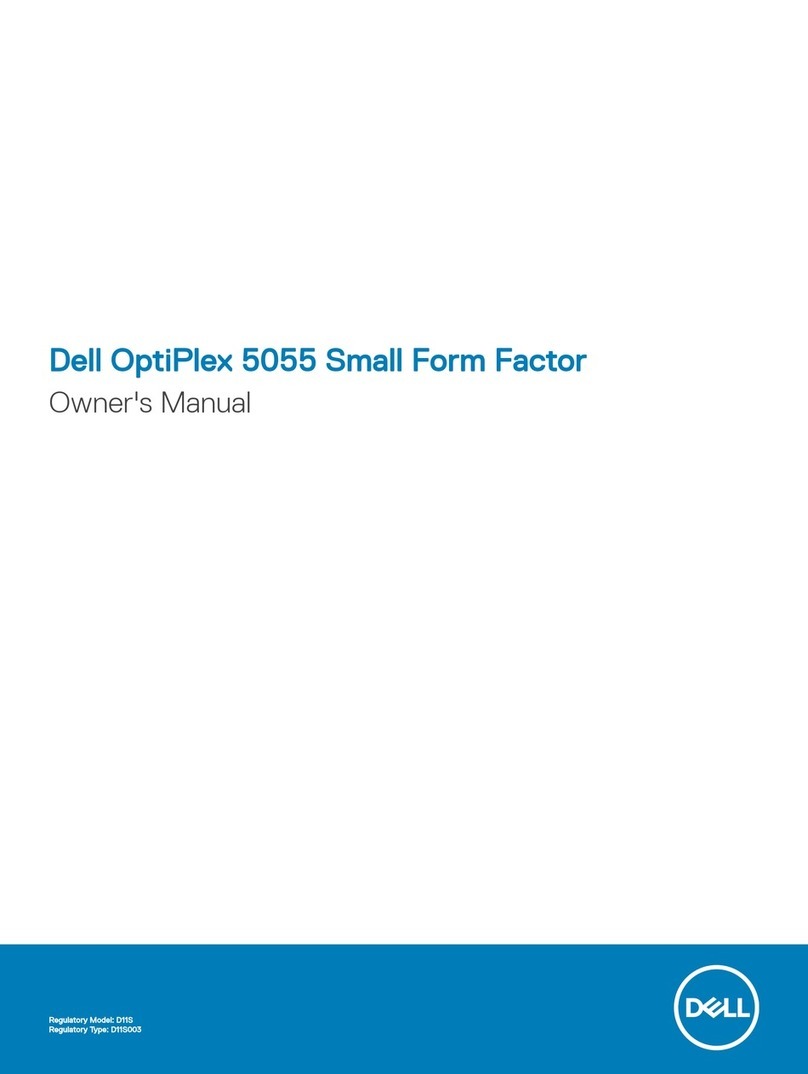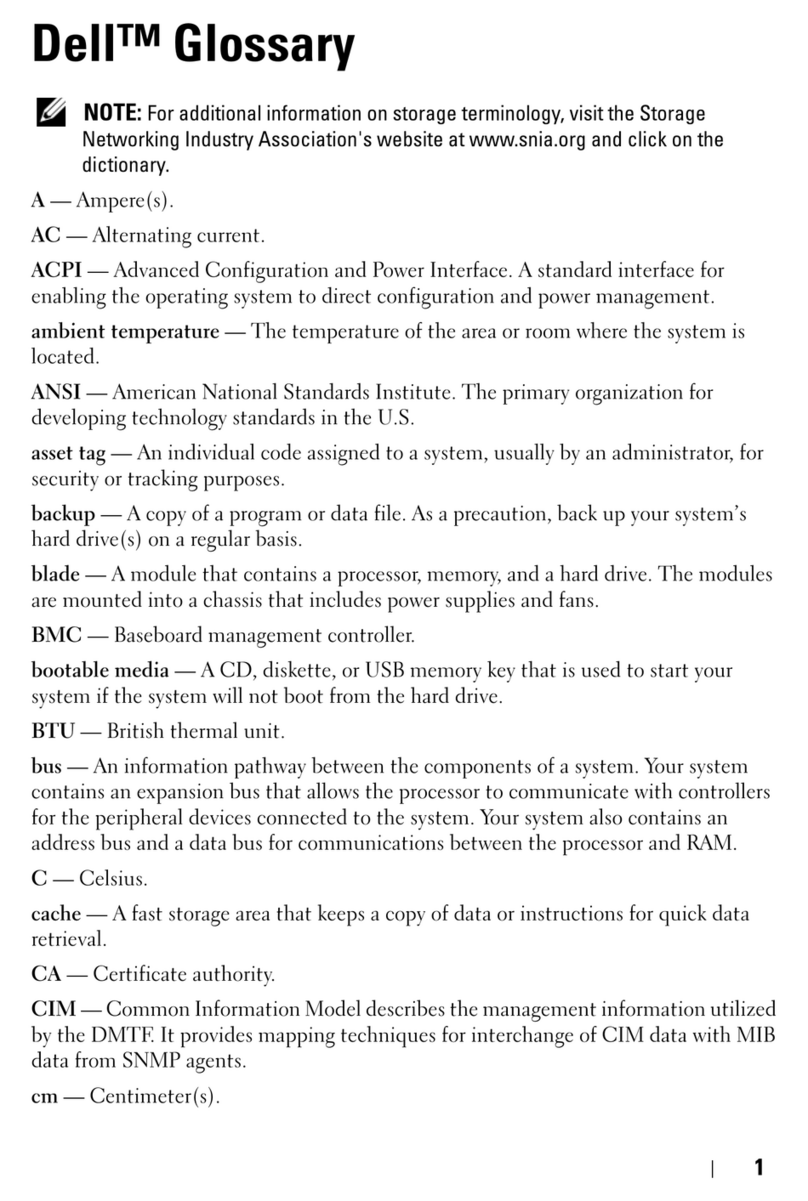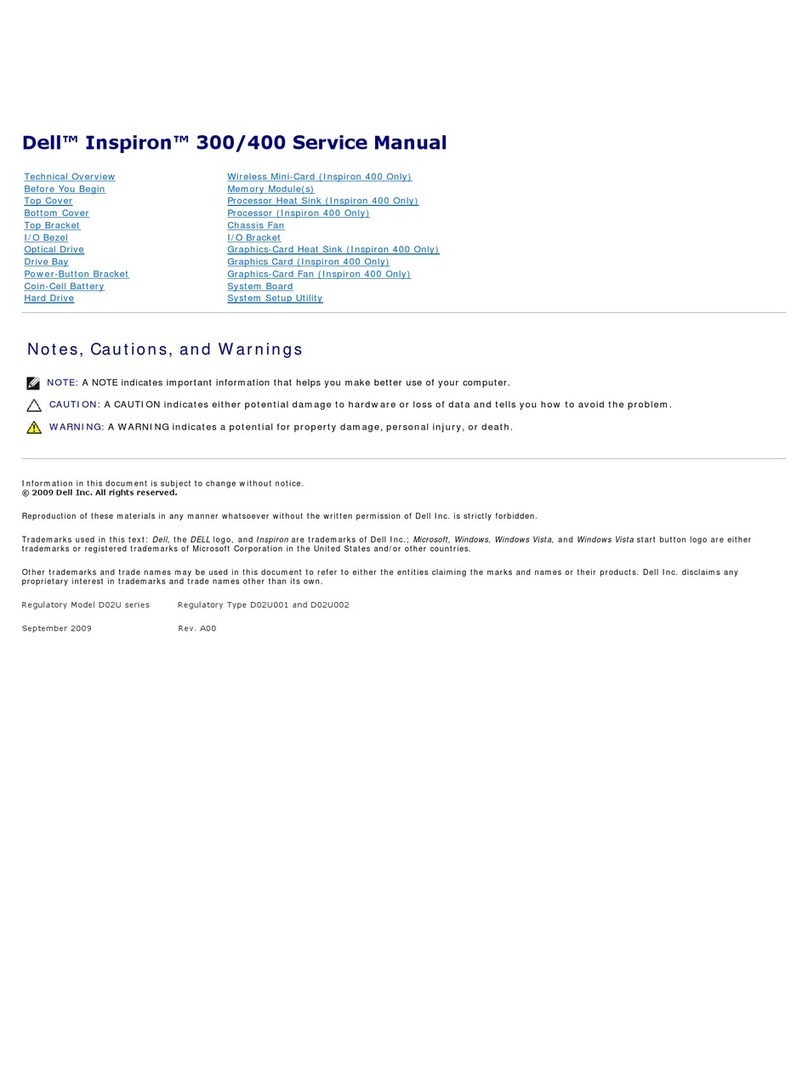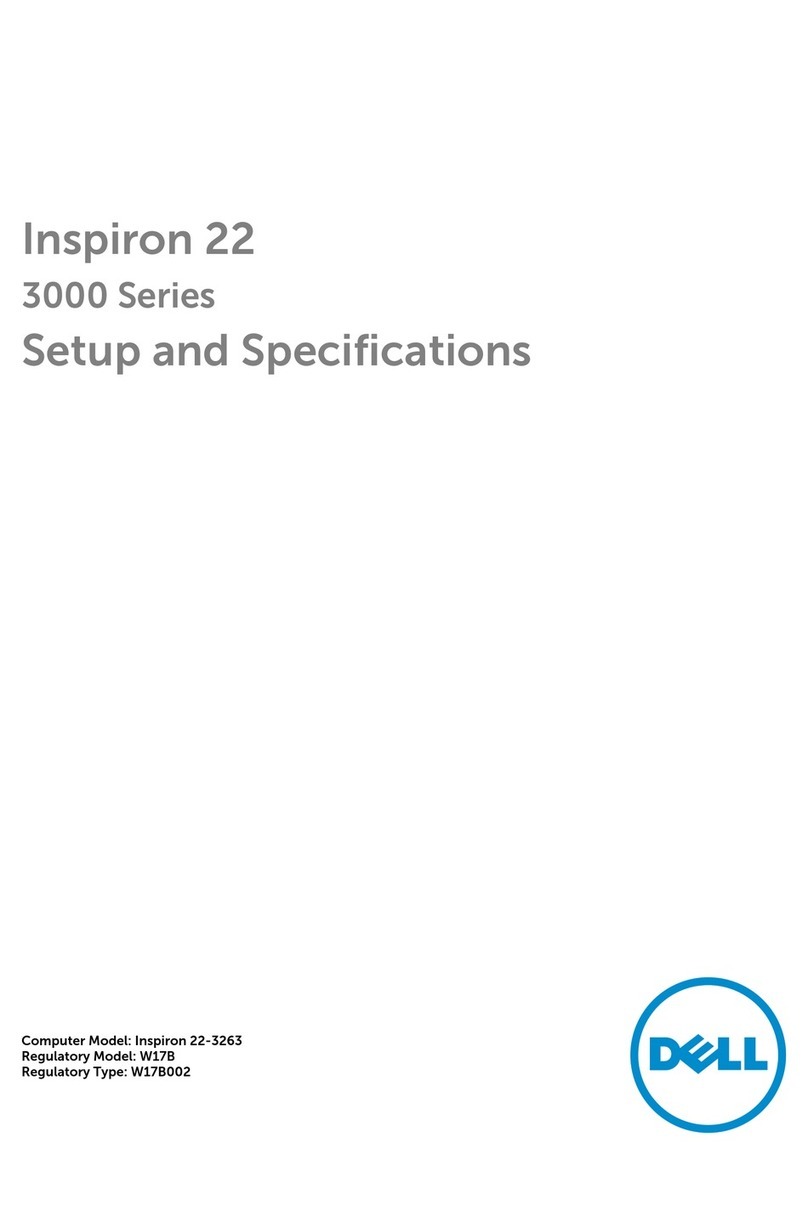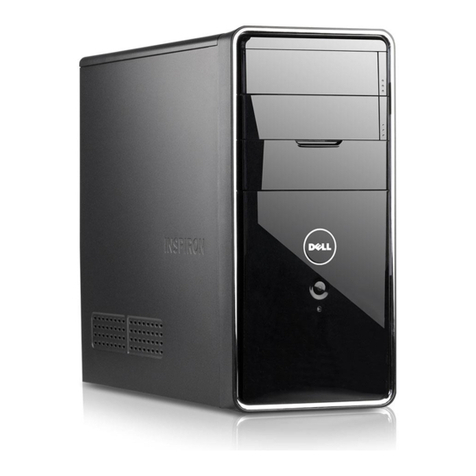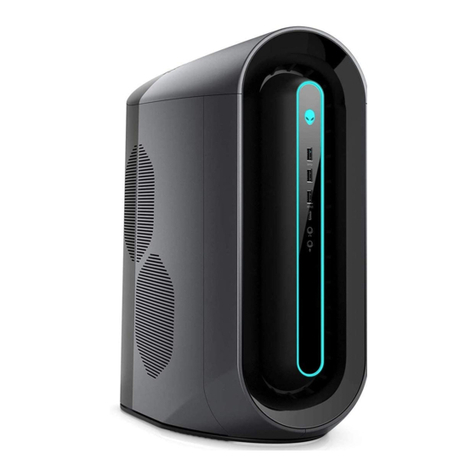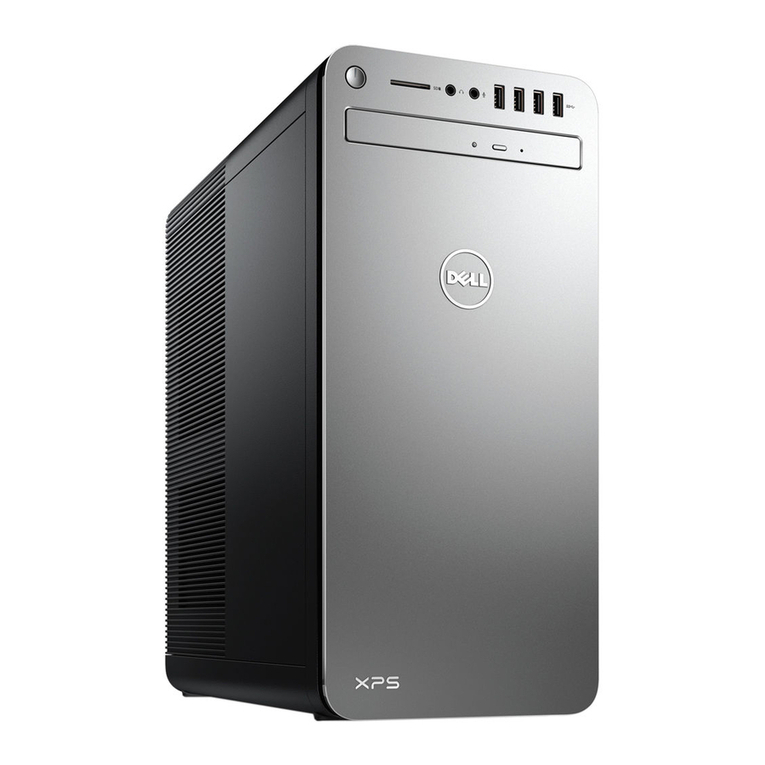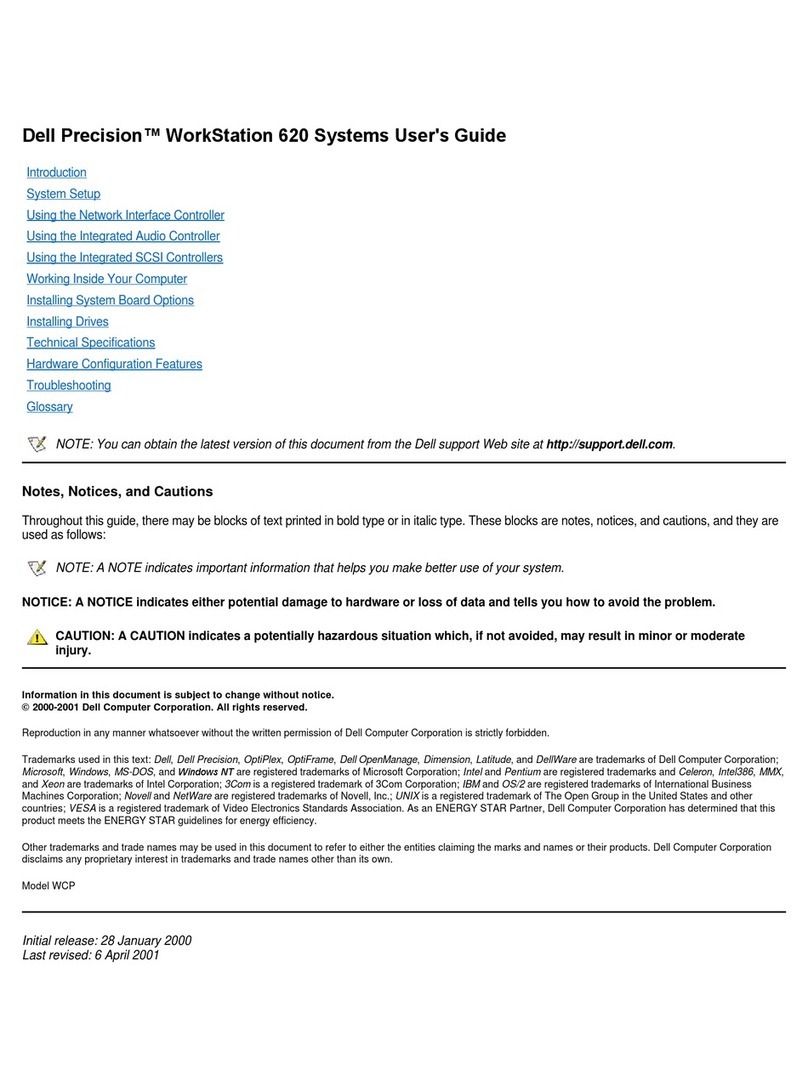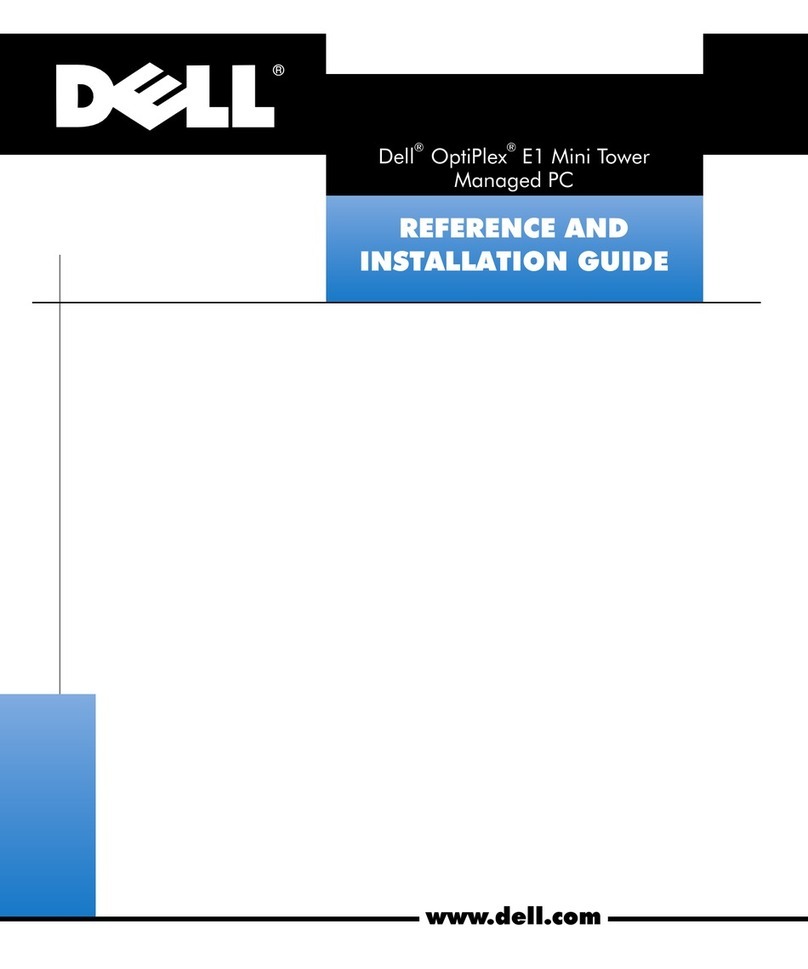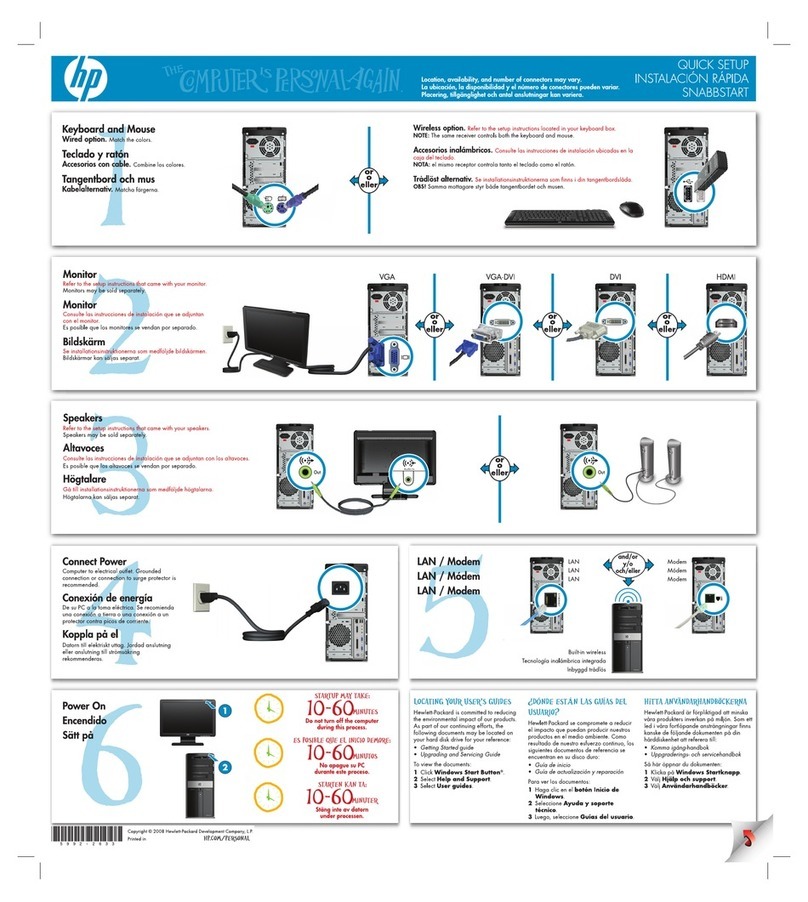erase
CAUTION: All other components on the system board lose data if power is removed from the system.
Primary power loss (unplugging the power cord and removing the battery) destroys all user data on the
memory (DDR3, 1067 MHz). Secondary power loss (removing the on-board coin-cell battery) destroys
system data on the system configuration and time-of-day information.
In addition, to clarify memory volatility and data retention in situations where the system is put in different ACPI power states the
following is provided (those ACPI power states are S0, S1, S3, S4 and S5):
S0 state is the working state where the dynamic RAM is maintained and is read/write by the processor.
S1 state is a low wake-up latency sleeping state. In this state, no system context is lost (CPU or chip set) and hardware
maintains all system contexts.
S3 is called “suspend to RAM” state or stand-by mode. In this state the dynamic RAM is maintained. Dell systems will be
able to go to S3 if the OS and the peripherals used in the system supports S3 state.
S4 is called “suspend to disk” state or “hibernate” mode. There is no power. In this state, the dynamic RAM is not
maintained. If the system has been commanded to enter S4, the OS will write the system context to a non-volatile storage
file and leave appropriate context markers. When the system is coming back to the working state, a restore file from the non-
volatile storage can occur. The restore file has to be valid. Dell systems will be able to go to S4 if the OS and the peripherals
support S4 state.
S5 is the “soft” off state. There is no power. The OS does not save any context to wake up the system. No data will remain in
any component on the system board, i.e. cache or memory. The system will require a complete boot when awakened. Since
S5 is the shut off state, coming out of S5 requires power on which clears all registers.


